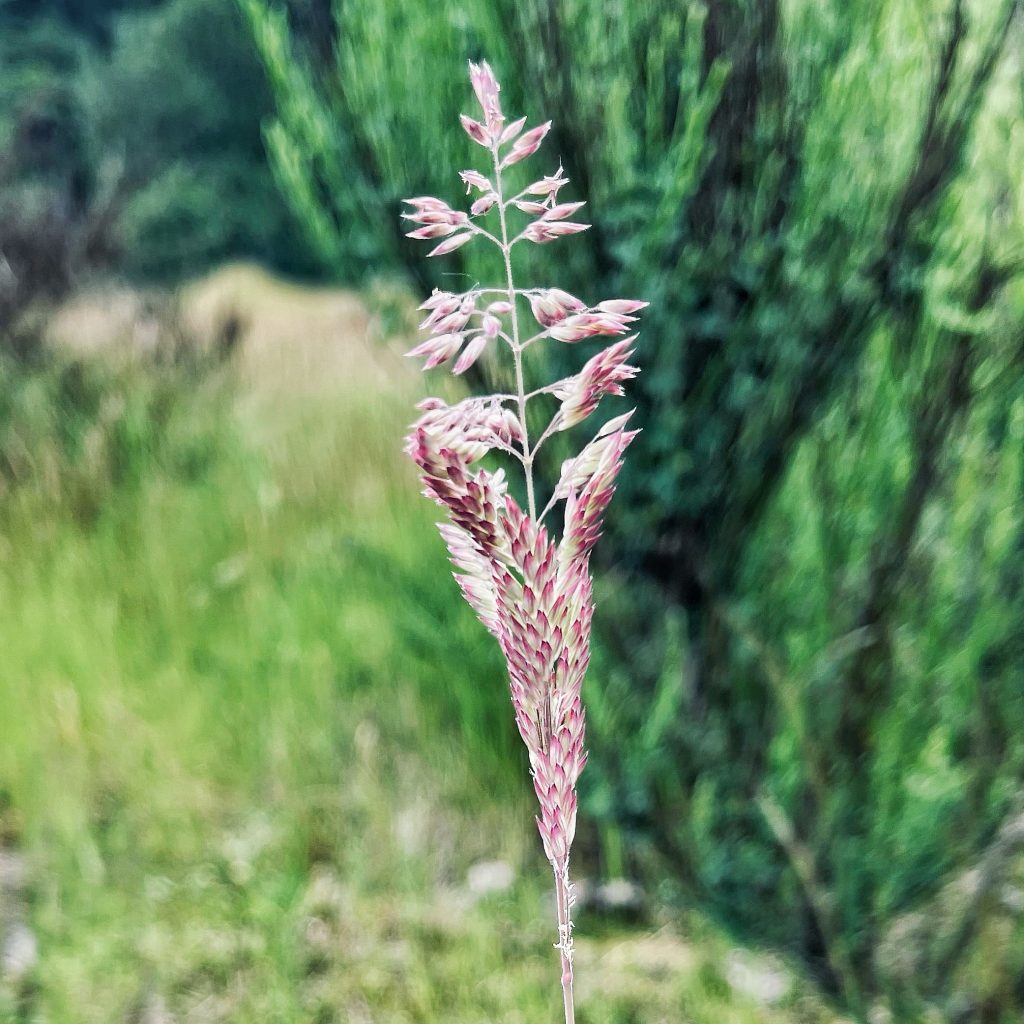
When I found these grasses on the Cowlitz River dike the first thing I noticed was that the inflorescence was a spike that spread into a panicle, and that they were reddish. Closer examination showed that they were very hairy, but soft, and that the hairiness of the long basal leaves gave them a much lighter green color, which really stood out amongst the surrounding grasses. Since they seemed so distinctive, and I didn’t have a clue as to where to start, I took a photo in my Seek app, and it told me they were Holcus lanatus (also known as common velvetgrass and Yorkshire fog). It was pretty easy to reverse key them through ‘Field Guide to the Grasses of Oregon and Washington’ (Roché/Brainerd/Wilson et al.; 2019), and I was so sure I had the correct identification that I didn’t even pester Cindy Roché for a confirmation.
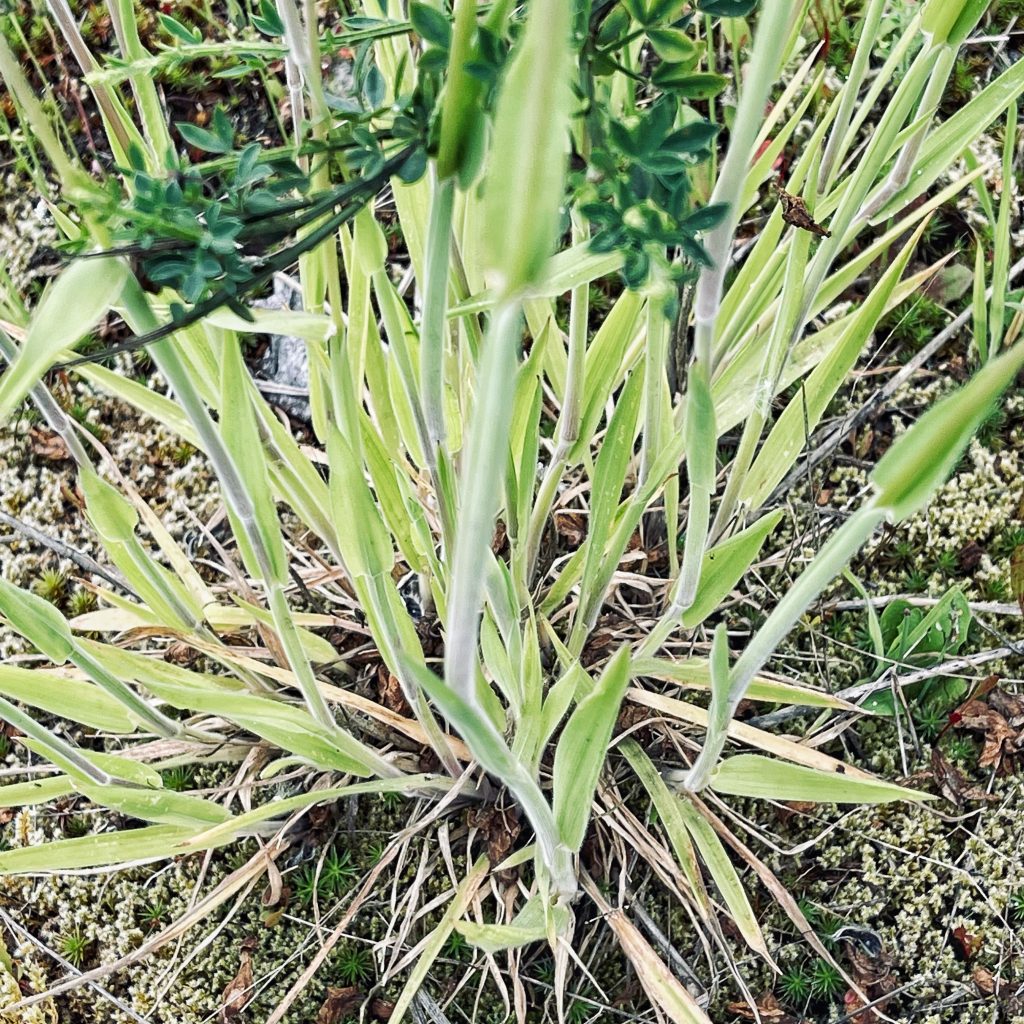
This is a very pretty grass, and I brought some home to Pam for her front porch grass garden, but it is a non-native and invasive species that can cause problems. A single plant may produce 240,000 seeds, and seeds may be viable for up to 12 years. It is frequently found in nutrient poor and damp soil, allowing it to colonize a wide variety of disturbed ground habitats. Due to a rapid growth rate and relatively high numbers of roots, it tends to outcompete most other grasses and forbs, and is also at least partly allelopathic (meaning it releases chemicals that retard the germination and growth of plants in its soil area). For anyone wanting a fuller picture of this plant I would recommend checking out the Forest Service webpage about this species.
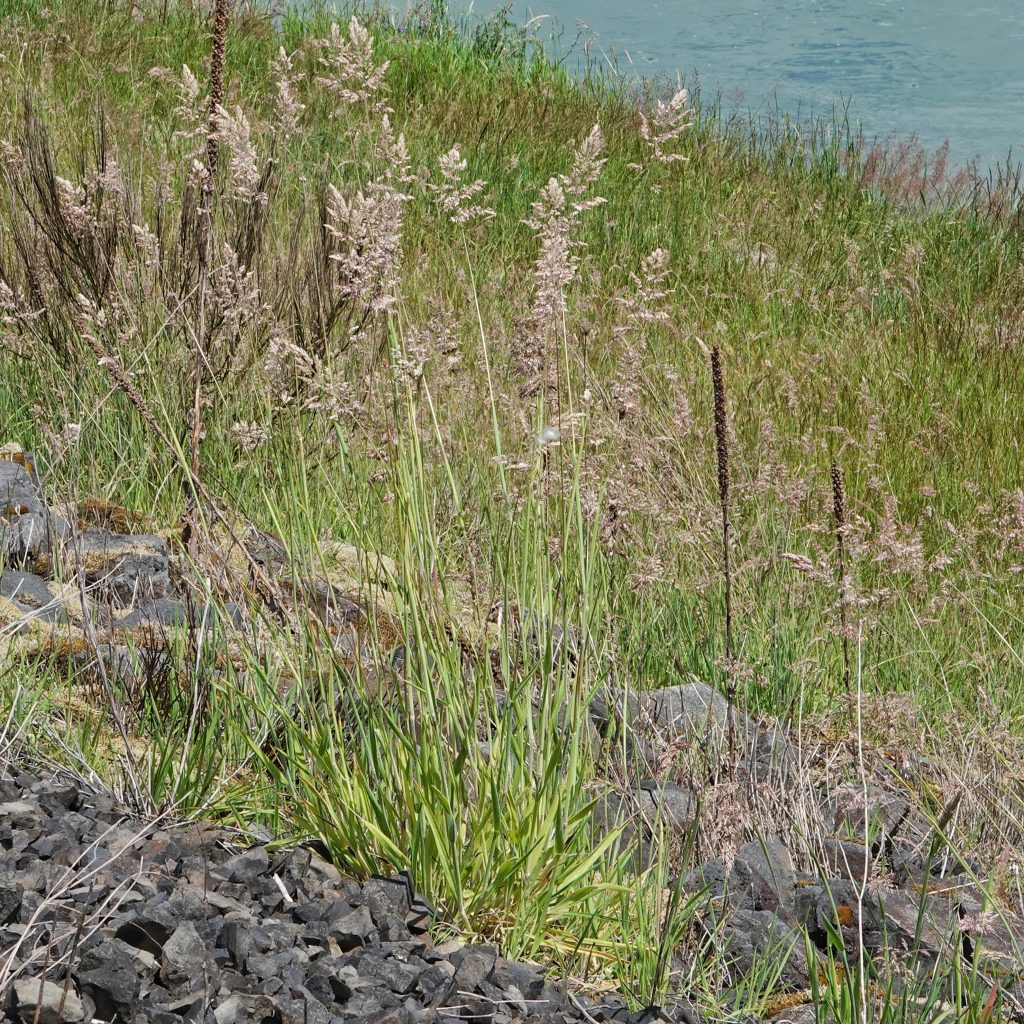
Description-Perennial; up to 40” tall; has a soft appearance due to being densely hair; especially on the lower half; leaves are 5-15mm wide, long at base and for the first few nodes, but short and almost appressed above; inflorescence starts as a spike and is purplish red, eventually spreads and is whitish pink, and after anthesis becomes closed again and white; upper awn becomes a hook when mature.
Similar species–Holcus mollis has densely hairy nodes, but the rest of the stem is glabrous (not hairy), and the upper awn is angled, but does not become a hook.
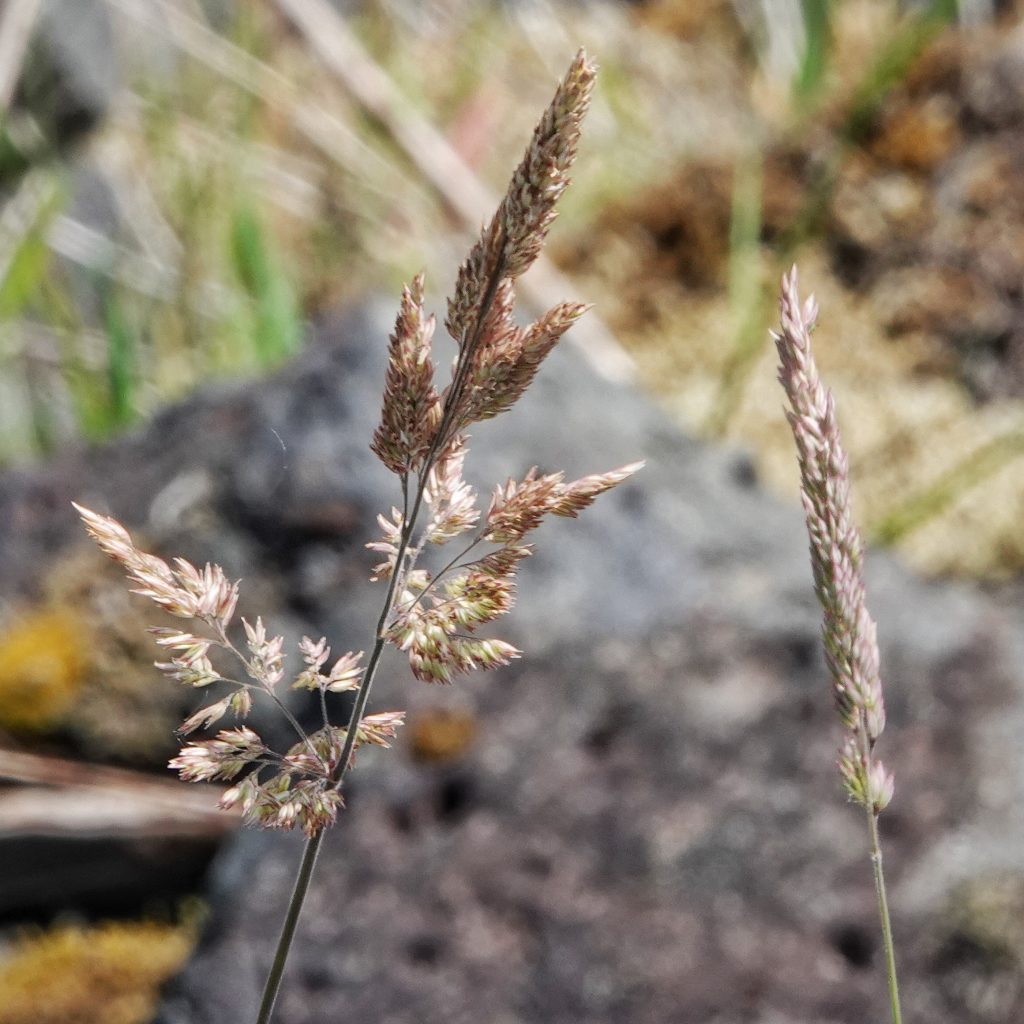
Habitat-Moist to mesic meadows, fields, forest openings, and open disturbed ground, up to 5,000’ elevation.
Range-Native to s Europe, w Asia, and n Africa; naturalized throughout North America; found in our region from the east slope of the Cascades to the Pacific, in sw Oregon and nw California, and in scattered montane locations east of the Cascades.
Reproductive timing-germinates in fall, and grows vegetatively through winter and spring; flowers May through July, depending on elevation
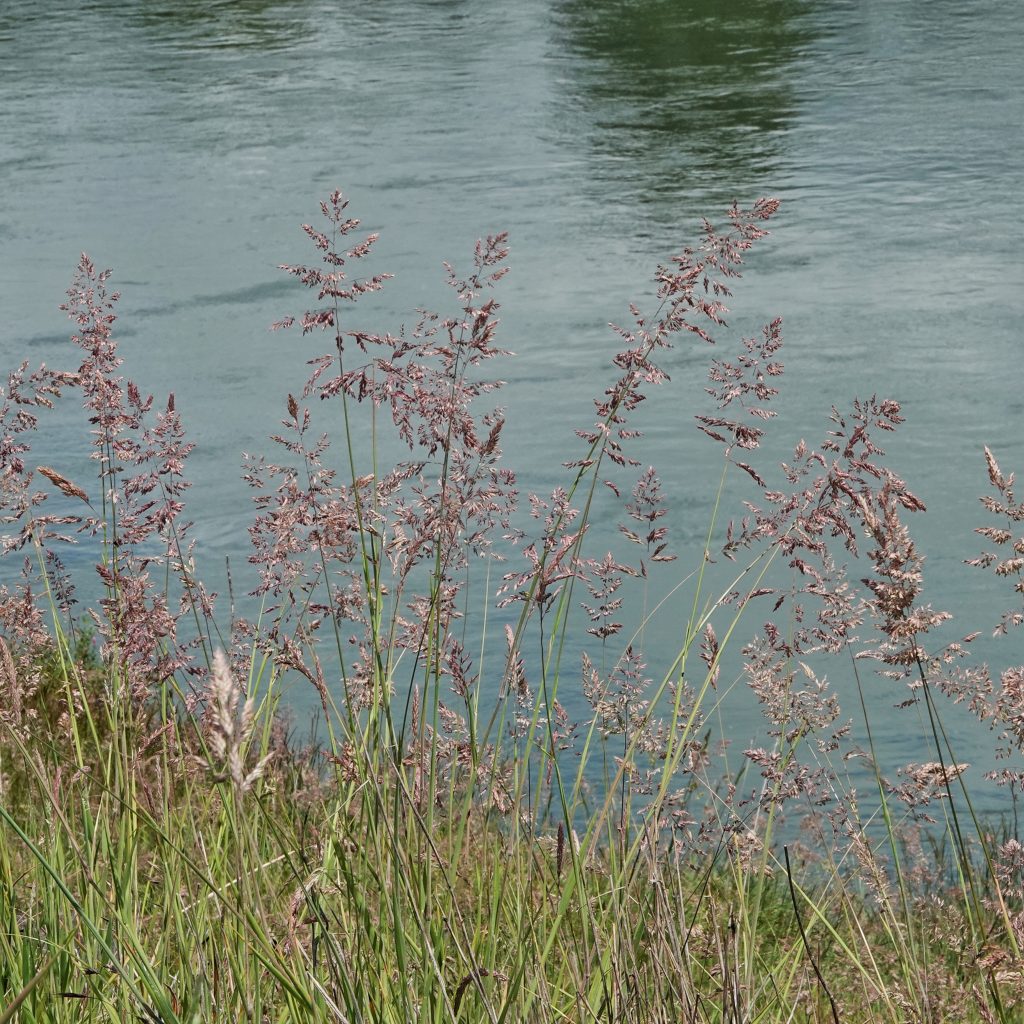
Eaten by-There are likely many, many more arthropods that feed on this grass, but the only specific references I can find are: small stink bugs in the genus Neottiglossa; moths in the genus Elachista mine its leaves and stems, as do flies in the genera Agromyza, Cerodontha, Liriomyza, and Pseudonapomyza; various herbivores graze the vegetative parts, but most of that comes during its growing season in winter and early spring when other options are limited, and it is not considered to be a high value forage; it is likely that many birds eat its seeds.
Etymology of names– Holcus is from the Greek word for ‘a kind of grain’. The specific epithet lanatus is from the Latin word for ‘wooly’, and refers to the densely hairy stems and leaves.
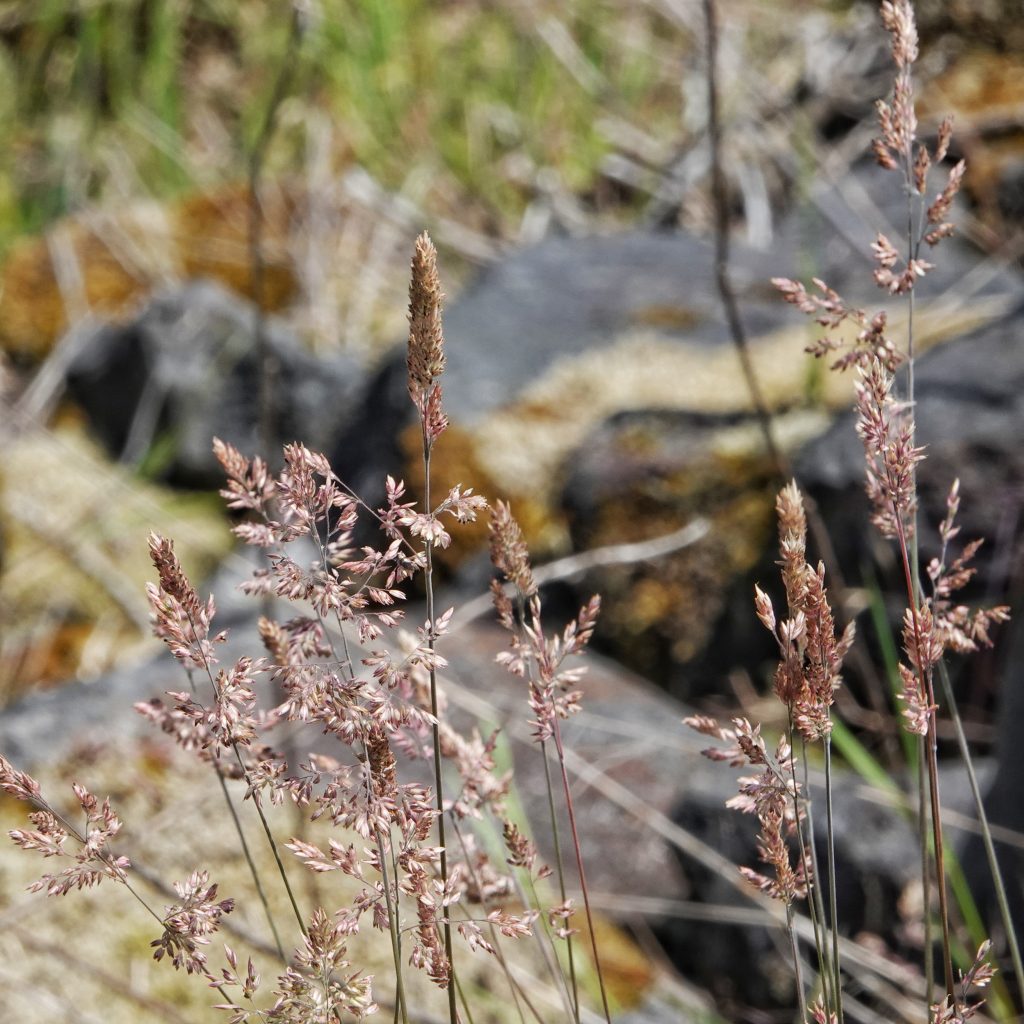
https://www.fs.fed.us/database/feis/plants/graminoid/hollan/all.html
https://accs.uaa.alaska.edu/wp-content/uploads/Holcus_lanatus_BIO_HOLA.pdf
https://www.cal-ipc.org/plants/profile/holcus-lanatus-profile/
https://wiki.bugwood.org/Holcus_lanatus
http://biology.burke.washington.edu/herbarium/imagecollection/taxon.php?Taxon=Holcus%20lanatus
https://osupress.oregonstate.edu/book/field-guide-to-grasses-of-oregon-and-washington
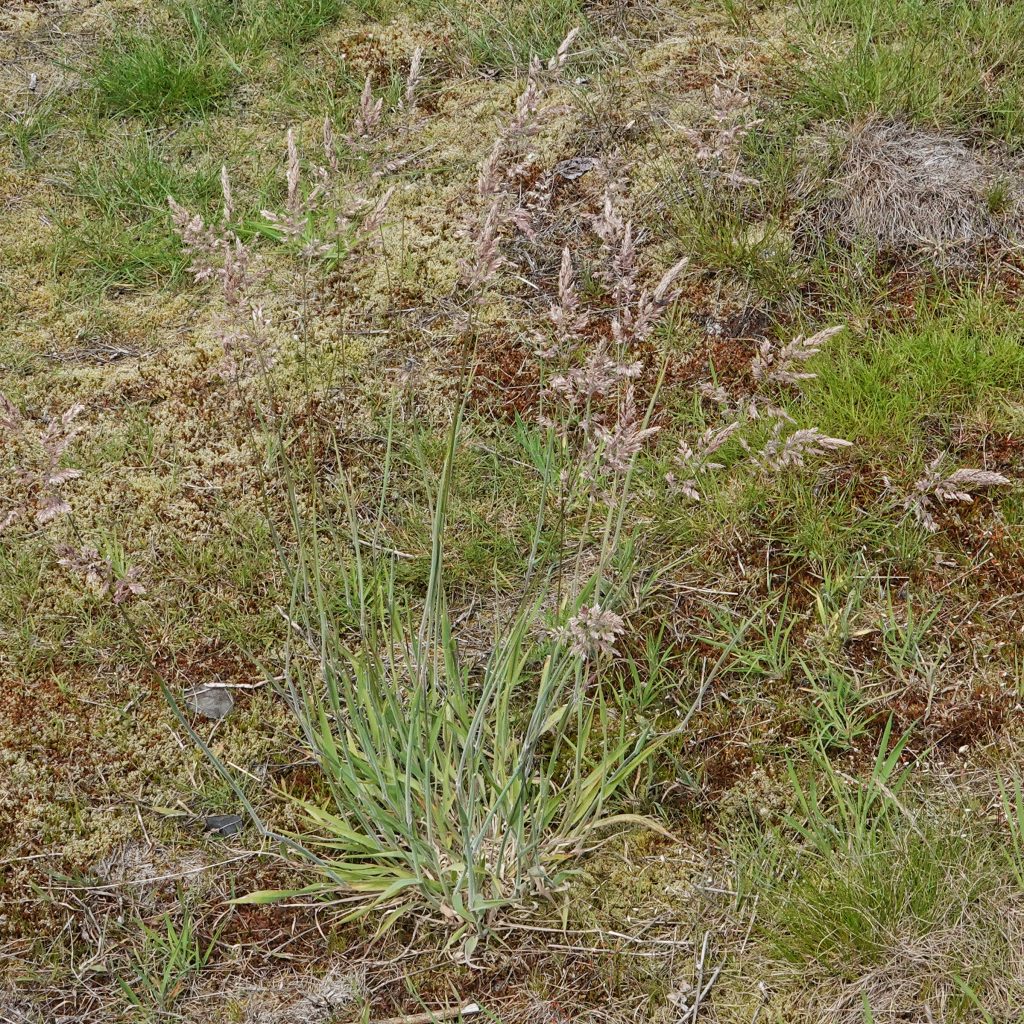
A lovely, pleasant to touch, easily identified, invasive weed.
And, it seems, extremely common in urban/suburban/rural areas. Since I identified it I see it everywhere, including along backcountry roads.
I’m very interested in the subject of plant competition and evolution with respect to native versus non-native plants. I work in restoration and we are frequently removing invasives and planting natives. However this is a short-term fix only as many “invasives”are very successful and widespread. I like to look at this as plant competition, with one species overcoming another and going forward in a typical survival of the fittest scenario.
Yes, a certain level of acceptance seems required so as not to be overwhelmed with despair. In my walks around urban Vancouver, Washington, I see almost no plants that are actually native to this area.